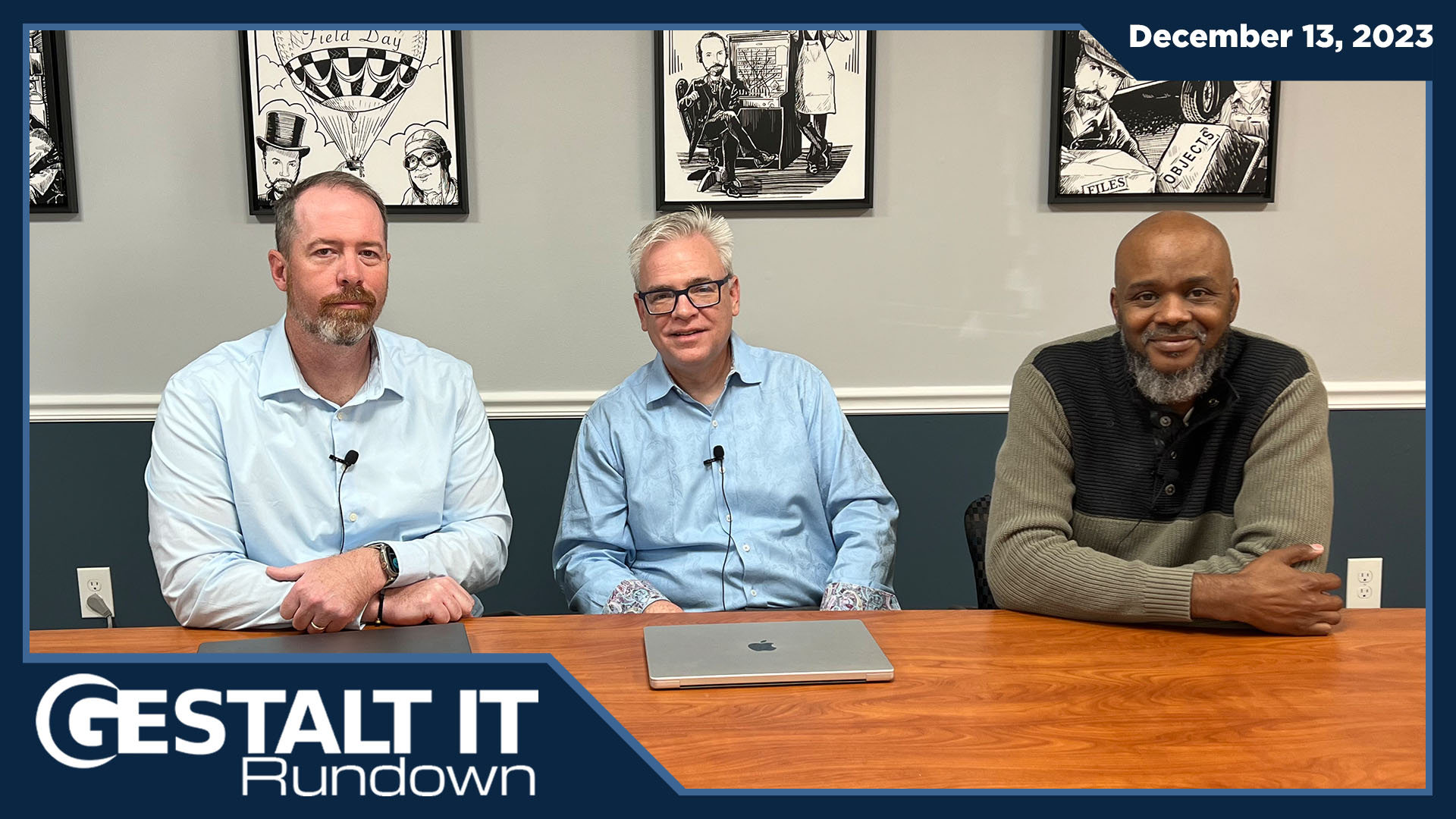Although the technical details of VMware’s version 4 product (dubbed the vSphere family) were known ahead of time, the product’s licensing model came as a surprise. Rather than go with the “base product + options” approach used by many software products, VMware decided on a flat tiered pricing scheme. Both approaches have their fans and detractors, but the details of VMware’s system left many off guard. Has VMware pushed the tiered model too far, eliminating flexibility and forcing enterprise customers to purchase pricey top-tier licenses? The Gestalt IT staff put our heads together to think the matter through.

VMware's Simplified licensing for vSphere includes four basic tiers for the enterprise plus two more for small business
Consult VMware’s vSphere 4 Pricing, Packaging and Licensing Overview for yourself and let us know what you think! A poll at VM/ETC shows that readers are decidedly positive. Eric Siebert put together a nice overview of licensing options for TechTarget, as did “the other Scott Lowe” for TechRepublic.
Stephen
The more I think about vSphere’s new tiered licensing, the more I think it’s a big mistake. I understand that there are always compromises involved with licensing and bundling, but I think VMware might have pushed the tiered model to an extreme. Rather than a few tiers and lots of options (as in ESX 3), VMware has created a simple system with six tiers. Want fault tolerance with continuous availability? You have to buy Advanced or above, bundled with the new Data Protection and priced $1,500 more than Standard.
It’s a very typical predicament to anyone who has purchased a car: American makers often let buyers customize their vehicle down to the smallest detail, with dozens of factory option line items, while Japanese makers offer just a few trim lines with bundled features. Want a V6 in your Honda Accord? You have to buy the EX model at least, complete with a premium audio system and fog lights. Honda does this because it’s easier and cheaper to manufacture and distribute standard car models. But Honda is selling hardware, not software!
VMware seems to be copying Microsoft’s Vista: Offer a limited functionality version that appeals to no one apart from its price tag but make users step up to more costly versions to get essential functionality. But Microsoft made a mistake that VMware might also be copying: They restricted desirable features to the top-of-the-line Enterprise and Ultimate versions, resulting in reduced impact and appeal for the product.?When I bought Vista, I had to buy Ultimate in order to get Media Center, EFS, and RDP.
Now consider the VMware vSphere license tiers:?I can see people buying Enterprise Plus just for PSA/PowerPath or Enterprise just for DRA and wishing they didn’t have to step up.?Restricting exciting new technology like third-party multipathing to Enterprise Plus, for example, will greatly diminish its appeal, reduce the installed base, and discourage vendors from developing plug-ins for it!
Although I am glad VMware added a low-cost small-business tier, I think they missed out by not offering a functioning system (without support) for free. Right or wrong, Microsoft is making hay with their claim that Hyper-V is (financially) free, and VMware missed an opportunity to respond. It also makes it very hard for the smallest businesses to experiment with VMware by putting a base price on the system.
Note that the Enterprise level might be going away at the end of the year, forcing all businesses to upgrade to Enterprise Plus!
Martin
I can see the hand of EMC very much in this; ever since Diane was removed, VMware feels more and more like a part of EMC. Even more so than when they were actually part of EMC.
However, tiered license models where you pay for features is becoming increasingly common; we only have to look at what goes on with the desktop apps, you often have a Pro version which adds features and not just scale.
But, vSphere is not a desktop product; I would prefer a license model where you license the features that you require for the capacity that you require. Actually I would be happier with a model where all features are available and you just license for capacity. It simplifies the model, it could get very complex to manage.
For example; my development cloud might have different licenses to my production cloud but in my production cloud, I might have different tiers of app and will I need to actually segragate my production cloud into multiple tiers?
If VMWare are serious about positioning v-Sphere as an OS; they might be as well to look at some of the other enterprise OS providers and some of the experiments that they have tried. IBM in their lunacy stripped out X-Windows and C from AIX in one release and tried to charge for it…it didn’t take and it is part of the OS again.
This license model might have some interesting impacts; for example, smaller shops which want the features but do not want to pay, may look to alternatives…be it other products or public-clouds. Or perhaps third-party add-ons which replicate the functionality of the more advanced editions of vSphere and the support headaches that will bring to both VMware and the end-user.
I’m glad I don’t have to work this out…VMware is the best product out there today and it has an incredibly passionate and loyal userbase but there is competition out there and pragmitism may force people to look elsewhere.
Scott
VMware should have pushed VMotion down the stack. This would sweeten the comparison between VMware and other “free” alternatives that will include (Hyper-V R2) or already include (XenServer) live migration.
Host profiles don’t belong in Enterprise Plus. They should have gone into Advanced or Enterprise. Yes, large organizations will benefit the most from host profiles, but others want it too.
Third-Party Multipathing shouldn’t be an additional licensed fee. As I understand it correctly, you’ll still have to pay the third-party for the actual software (i.e., you’ll have to pay EMC for PowerPath/VE). So what is VMware giving us here? The “ability” to use third-party multipathing? Charging extra for that isn’t the best choice, IMHO.
What’s up with Advanced having a 12-core limit, but Enterprise having a 6-core limit? Because existing VI3 Enterprise customers will be grandfathered into vSphere 4 Enterprise if they have active SnS, this strikes me as nothing more than an attempt to extort more licensing fees.
Even though I clearly disagree with some of their licensing-related decisions, I can kind of see where VMware is coming from on this one. Since every VI3 Enterprise license with active SnS (Support and Subscription) will be grandfathered into a vSphere 4 Enterprise license, VMware needed some way to generate license revenue. So what’s the best way to handle this? How does VMware recoup its development costs? Increase SnS fees? There would be backlash against that as well. If we are going to make a big deal out of how VMware handled this and say that we disagree with it, then I think we also ought to be willing to provide suggestions on how it should have been done. It’s kind of like saying, “Don’t discuss the problem without also discussing a solution.”
Rich
It seems to sit better with me if VMware would offer vSphere hosts (classic and ESxi 4) for free and then license the features individually with editions of vCenter. This puts VMware more in line with the competition and hopefully helps recoup some development costs.
Personally, the argument I’m hearing from VMware (the podcast) is that no one else has these features. This is true, but it can come across to some as gouging. If the only gas station in town gouged on gas, what if everybody decides they are going back to walking for a while until somebody else opens up to compete?
Time will tell, and then will VMware customers have a bad taste in their mouth over this period?
Conclusion
We all agree that licensing is imperfect, and that there were bound to be flaws no matter what VMware decided. Yet we all see serious negatives in the specific implementation chosen by VMware for vSphere 4:
- Certain features like third-party multi-pathing and host profiles are misplaced in the stack regardless (See Vinternals post for more)
- We would generally prefer a base + options system over a tiered system
- The lowest-end product is still too expensive for labs and the smallest businesses
- Time will tell how customers react, and if the forced march to Enterprise Plus puts off business customers
VMware needs to make money on licensing, and they deserve it. They’ve put together an excellent product, after all. But they are risking their market position by relying on such strict tiers!





Similar reaction to vSphere licensing:
http://technodrone.blogspot.com/2009/04/will-we…
Similar reaction to vSphere licensing:
http://technodrone.blogspot.com/2009/04/will-we…